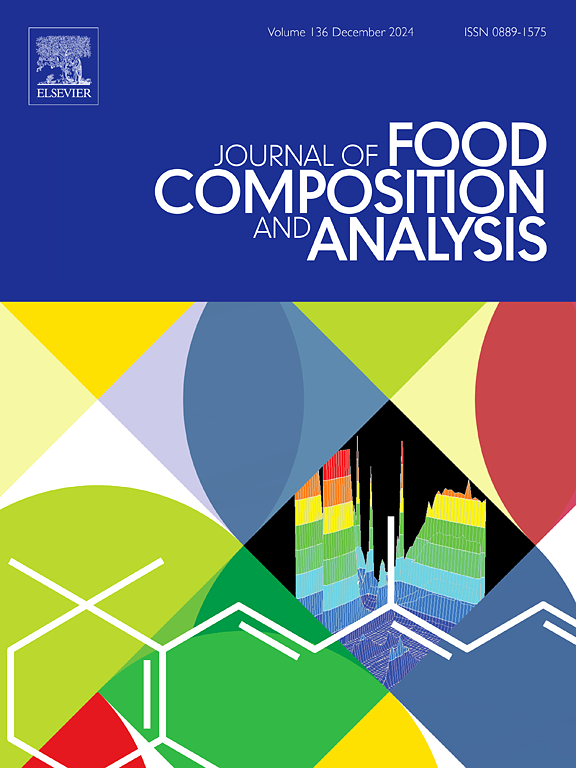A RhB@Tb-MOF sensor for selective detection of malachite green and leucomalachite green
IF 4
2区 农林科学
Q2 CHEMISTRY, APPLIED
引用次数: 0
Abstract
The misuse of malachite green (MG) has led to significant water pollution, and its metabolite, leucomalachite green (LMG), poses a serious health risk. Rapid detection of drug residues in aquaculture is crucial for food safety. In this study, the dual-emission fluorescent sensor RhB@Tb-MOF (RhB = Rhodamine B) was synthesized based on fluorescence resonance energy transfer (FRET). MG significantly quenches the fluorescence of RhB and affects the fluorescence of Tb-MOF to different extents, making it a suitable ratiometric fluorescent sensor for sensitive MG detection with a limit of detection (LOD) of 9.6 × 10−3 μg/mL. Although LMG did not affect the fluorescence of RhB@Tb-MOF, it formed a ratio with the fluorescence of RhB@Tb-MOF due to its intrinsic fluorescence properties, and the LOD was 3.5 × 10−3 μg/mL. Additionally, increasing MG concentrations shifted the sensing system's color from pink to blue, with a colorimetric LOD of 0.15 μg/mL. This paper introduced a colorimetric/fluorescent dual-mode sensor for MG and LMG detection. Furthermore, this sensor was combined with smart labeling technology to achieve rapid on-site quantification of MG, offering significant potential for broad application.
求助全文
约1分钟内获得全文
求助全文
来源期刊

Journal of Food Composition and Analysis
工程技术-食品科技
CiteScore
6.20
自引率
11.60%
发文量
601
审稿时长
53 days
期刊介绍:
The Journal of Food Composition and Analysis publishes manuscripts on scientific aspects of data on the chemical composition of human foods, with particular emphasis on actual data on composition of foods; analytical methods; studies on the manipulation, storage, distribution and use of food composition data; and studies on the statistics, use and distribution of such data and data systems. The Journal''s basis is nutrient composition, with increasing emphasis on bioactive non-nutrient and anti-nutrient components. Papers must provide sufficient description of the food samples, analytical methods, quality control procedures and statistical treatments of the data to permit the end users of the food composition data to evaluate the appropriateness of such data in their projects.
The Journal does not publish papers on: microbiological compounds; sensory quality; aromatics/volatiles in food and wine; essential oils; organoleptic characteristics of food; physical properties; or clinical papers and pharmacology-related papers.
文献相关原料
公司名称
产品信息
阿拉丁
Propylethylenediamine (PSA)
阿拉丁
Tb (NO3)3·6H2O
 求助内容:
求助内容: 应助结果提醒方式:
应助结果提醒方式:


